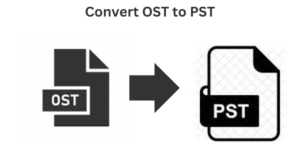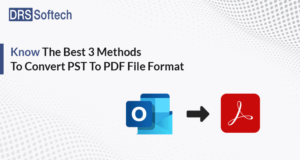Are you looking for simple ways to export IMAP to PST? Basically, when it comes to backing up or migrating emails, particularly for users of Microsoft Outlook, the need arises to export IMAP data to PST file format.
In this article, we will discuss the proper procedure for converting your IMAP emails to PST. Keep reading!
What is IMAP, and why should I backup my IMAP email to PST?
Basically, IMAP stands for Internet Message Access Protocol. Gmail, Outlook, and many other email clients support the IMAP protocol. The most beneficial feature is that IMAP allows you to access your emails on any device from anywhere in the world.
Actually, like any other traditional email protocol (like POP), IMAP doesn’t download or store email messages. Rather, it stores data on the email server, and you can easily access it from anywhere with a stable internet connection.
Though IMAP allows you to access your emails from anywhere with just an internet connection, there may be times when you need to access your emails offline. In such a case, by converting IMAP emails to PST and importing them into Outlook, you can easily access emails without any internet connection.
Simple Steps to Export IMAP to PST File Format
Gmail, Apple Mail, Thunderbird, Outlook, Mailbird, and many more email clients support the IMAP protocol. But every email client doesn’t offer you the option to export your IMAP emails to PST. In this case, only MS Outlook gives you the opportunity to connect with IMAP and export to PST.
Here we will step-by-step discuss the procedure for how you can connect your IMAP emails with Outlook and how you can export them to PST format.
Connect the IMAP server with Outlook.
- Open Outlook and click on the file menu in the upper-left corner.
- From the “Info” tab, click “Add Account.”.
- The “Add New Account” window will pop up. Here, select the “Manually configure server settings or additional server types” option and click on “Next.”.
- Then select “Internet E-mail” and click “Next.”.
- Fill up all the information, including the name and email address. In the “Account Type” field, select “IMAP.” On the Incoming and Outgoing Mail Server field, enter the address provided by your mail server.
- Click on the “More Settings” options. Under the “Outgoing Server” tab, select the “My outgoing server (SMTP) requires authentication” option.
- Now click on the “Advanced” tab. In the incoming server (IMAP) field, enter 993, and in the outgoing server (SMTP) field, enter the value 587. Then click “OK”.
- Now Outlook will test the account settings, and if all the values are correctly entered, Outlook will start syncing your emails from the IMAP server.
Export IMAP to PST.
After you have configured your IMAP emails with Outlook, you will find that a new PST file with all the emails from that IMAP server has been created automatically. Now, you can easily navigate to your device location and keep a backup of the PST file.
Limitations of the manual process of exporting IMAP to PST
Manually exporting IMAP emails to PST format may have several limitations. Including;
- The manual process of IMAP mail server migration can be time-consuming, especially if there are a large number of emails to export.
- The risk of data loss or corruption during the transfer process is high.
- Manual methods often lack advanced features such as email filtering, selective email migration, and many more, which are available in specialized software solutions.
- Basically, migrating from IMAP to PST manually requires technical knowledge of email clients and file formats, which can be challenging for users who are not familiar with these technologies.
- Manually exporting emails may result in compatibility issues between different email clients and file formats, leading to data formatting errors or loss of data.
A professional solution for IMAP migration
If you regularly need to export IMAP emails to PST from multiple email platforms, using the Regain IMAP migration tool is far better. Because with this tool, you can perform batch conversions. Besides, there isn’t any risk of data loss.
There are multiple IMAP migration tools available online. But before making any purchase, try to see the reviews first. If possible, try out the trial version of the tools (if available).
Benefits of using advanced tools for IMAP migration
- Automate the IMAP to PST migration process to save time and effort.
- Users can schedule the migration process to run at convenient times without constant supervision.
- Advanced migration tools offer a wide range of features, such as selective migration and email filtering, and allow users to customize the migration process according to their needs.
- Lower risk of data loss or corruption. Because advanced tools offer built-in security features to protect sensitive email data during migration, such as encryption and password protection,.
- IMAP migration tools support a variety of email clients, servers, and file formats.
- Due to the user-friendly and easy-to-use interface, you don’t need to have so much technical expertise.
- By using the tool you can also migrate IMAP email to new server.
Conclusion
IMAP to PST migration isn’t a straightforward process at all. But you can easily connect your Outlook with the IMAP mail server and export the mailbox emails to PST. However, always try to follow the on-screen instructions properly to avoid any uncertain data loss.






More Stories
How do I fix the Outlook OST is it not an Outlook data file? PST error?
Know The Best 3 Methods To Convert PST To PDF File Format
Qualified Tactics to Unite/Combine/Merge VCF (vCard) Contacts in One File